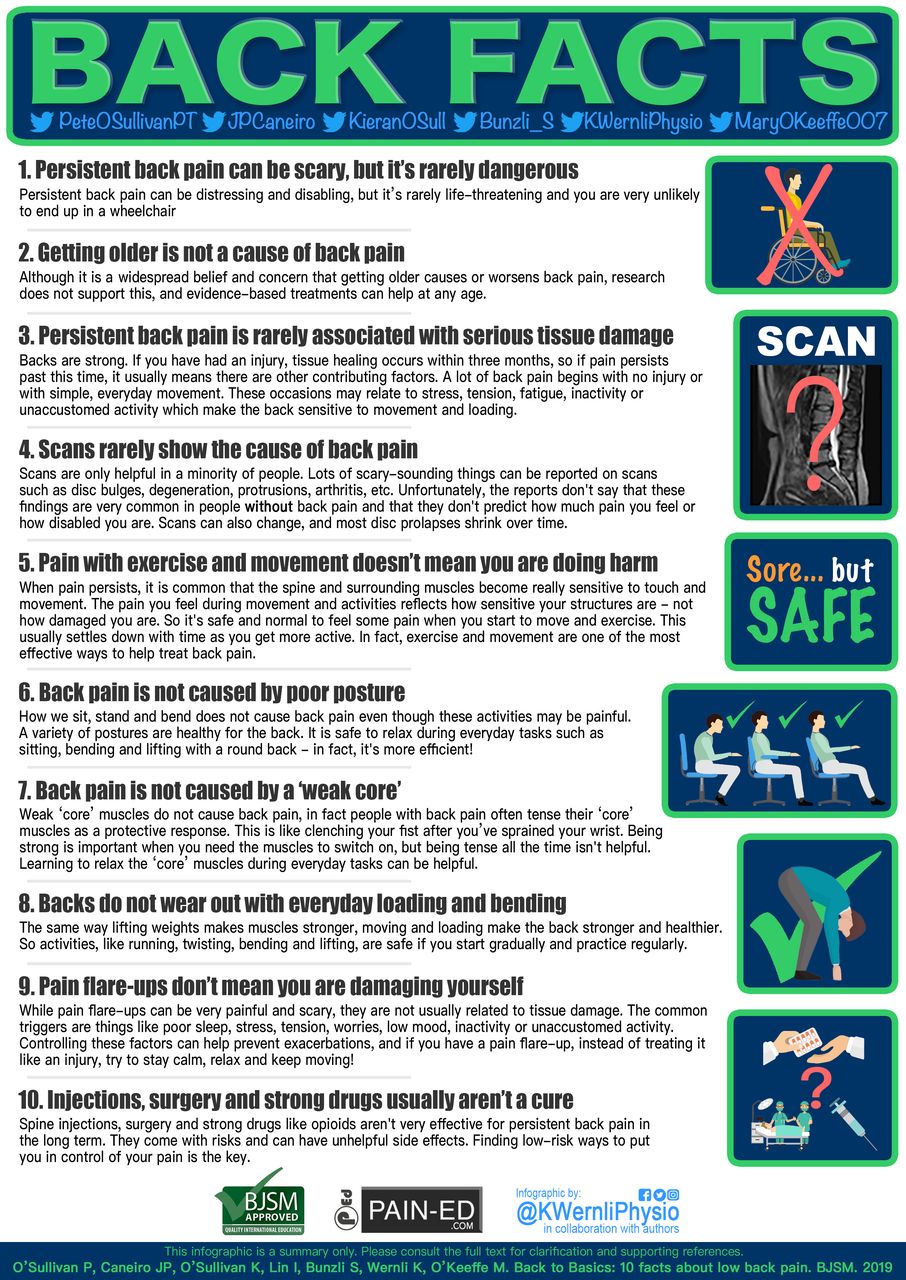Back Pain
We know back pain can be scary and really disrupt one’s life. Typically, this is for a short period of time. This can happen from performing activities we are not accustomed to or moving in an awkward way. The body typically responds with the feeling of a “locking up” and contrary to previous beliefs, it is best to keep moving.
There are many myths around back pain that we hope we can clear up that can assist you on the road to recovery.
Who Gets Back Pain?
Up to 80% of us will experience back pain during our lifetime and recurrence is common. 70% of people, however, will resume their previous level of activity within a short period of time (4-8 weeks). 30% of people experience persistent pain beyond this time frame and will require treatment to assist them in their recovery. Reassuringly, only 1-2% of back pain is due to emergent medical concerns such as a fracture, cancer, or inflammatory conditions. This means that this is very rare!
What Are The Risk Factors?
Pain in the back is usually linked to things that also deteriorate our general health. Being stressed, run down, carrying too much weight around the belly, poor sleep, low mood, limited physical activity, doing things we are not used to, and smoking all elevate our risk for developing back pain.
Can You Reduce Your Risk?
Again, similar to our general health, the health of the lower back is maintained through movement or regular exercise, maintaining a healthy body weight, caring for our mental health, adequate sleep, and avoiding excessive smoking and alcohol consumption. When we do not manage these areas of our life, our back can become painful as the structures of our spine become sensitive.
What Does Serious Back Pain Look Like?
- 1-2% of the population
- If you have suffered trauma, such as fall off a ladder, seek medical advice and treatment to ensure you don’t have a fracture
- If you are over 50, have a prior history of cancer, and are generally feeling unwell in addition to your back pain, consult with your primary care physician
- If you have back and leg pain, are losing strength or power in your legs, and are having urinary changes, please consult with you physician
The below videos summarize a research paper co-authored by Physiotherapists Professor Peter O’Sullivan, Dr JP Caneiro and Kevin Wernli. They share ten scientific low back pain facts presented by patients, as well as patient stories behind the facts.

The FACTS about back pain often surprise people. These include:
✔ Back pain is the leading cause of disability – it can ruin lives, but it doesn’t need to if you seek back pain treatment!
✔ It is rarely linked to serious tissue damage or life threatening disease
✔ Scans often can’t identify the cause
✔ So called ‘abnormal findings’ on scans like disc bulges, disc degeneration and arthritis are common and normal in most people without pain especially as they get older
✔ Backs don’t go out of place … ever!
✔ There is no perfect posture … a variety of postures is good for the back … even slouching is OK.
✔ Backs become healthier with movement and physical activity
✔ Gradually loading the back is safe and makes the spine stronger
✔ There are lots of ways to treat back pain, even when you are elderly … so don’t give up, get a good plan and stick to it.
✔ 30% of people that have back surgery are no better. Benefits from injections as a back pain treatment option are often short lived and strong drugs such as opioids are not effective for persistent back pain and have many negative side effects
